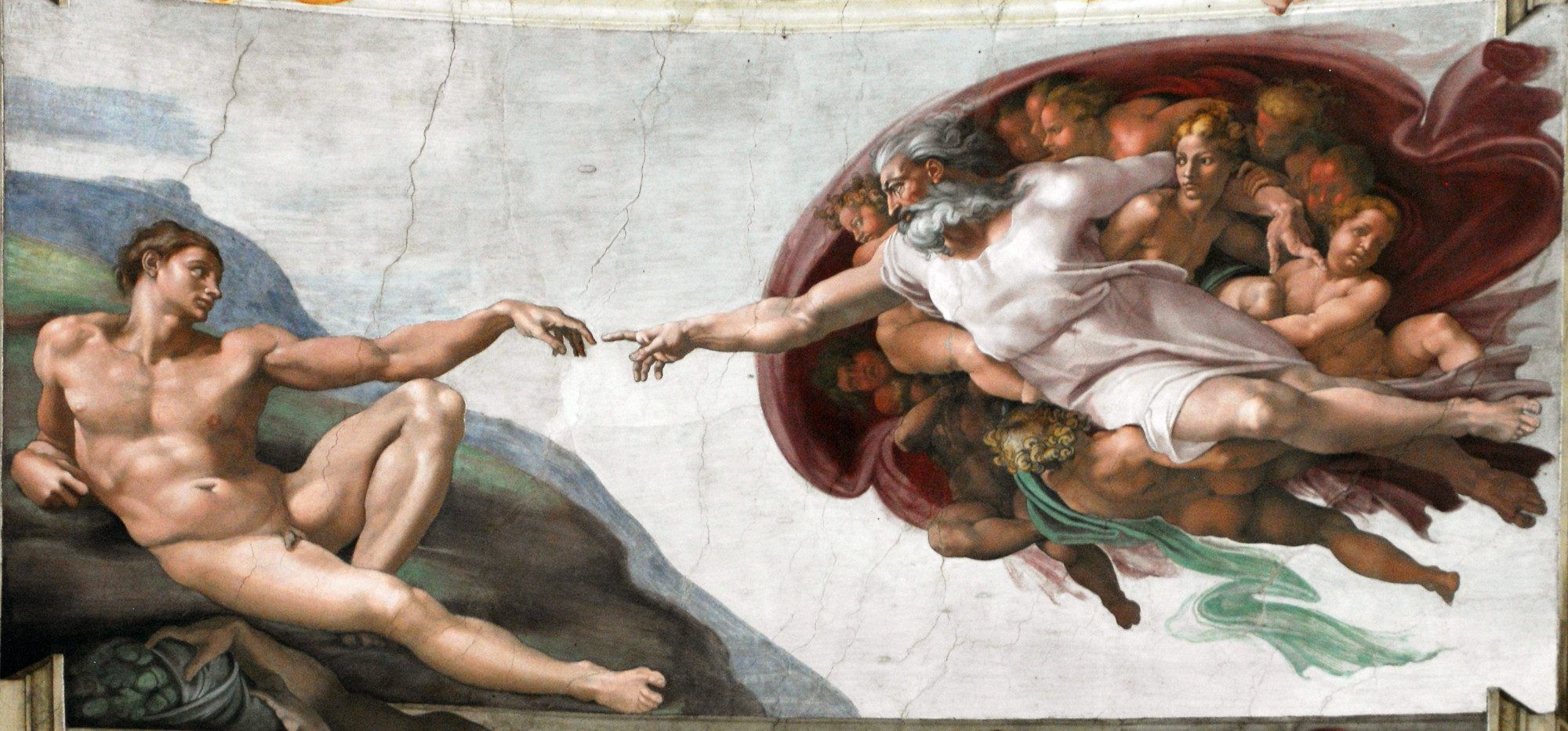The mysteries of art are among the most interesting to discover. Over the centuries, many painters have enjoyed inserting secret symbols or coded messages, designed for the most attentive observers. The term "easter egg"indicates a hidden content, usually bizarre and particular that the developers of a product, especially in video games, hide inside it.
Easter egg it has also become part of common language, it can be a hidden message to be found in a film, in a comic strip, in any product of an artistic nature, clearly not necessarily referring to the work itself. These references can also be found in the most famous works of art. Let's see some.
The Gioconda

The "Gioconda"It is probably one of the most famous and marketed paintings in the entire history of the world, so how many times have we found it under our nose? As clear as everyone can remember, not many will have noticed the Leonardo Da Vinci initials in the right eye of the alleged female protagonist, or even in the brushstrokes of the bridge behind the Mona Lisa where it is possible to glimpse a 72. It seems that Leonardo da Vinci really enjoyed putting hidden meanings in his works.
The creation of Adam

Michelangelo was no less in "The Creation of Adam", the famous painting where God reaches out to the First Man, supported by a cloud. How many of you have noticed the new one is actually a human brain? A small historical excursus, the Italian Renaissance can be perfectly represented with the "Creation of Adam", which Buonarroti spent 16 days to finish according to the sources of the time. According to several scholars, it would represent the greatest gift that God has given to humanity: the intellect. A rather common concept in a period in which intellectuals divided themselves into two preponderant currents of thought, the Platonic one and the Aristotelian one. The message represented by Michelangelo belongs to the neo-Platonic current, which at the time was absorbed by Christianity.
Caffe Terrace at Night

Vincent Van Gogh, among the most unfortunate of the great geniuses of art, painted "Cafe Terrace at Night". It is curious to know that the work, studied by many art historians, would seem to refer to theLast Supper by Leonardo Da Vinci. Although Van Gogh wrote to his sister that he was inspired by Guy de Maupassant's novel Bel Ami, experts found several similarities with the Da Vinci wall painting.
Twelve individuals are represented in both works, seated on the sides of a figure that divides them into two groups. In the Last Supper we have Jesus but in Cafe Terrace at Night she is a waitress dressed in a white white who stands out on the other characters in common colors, who is exactly in front of a window whose dividing strips form a cross. It is the study of the letters, this time sent to Brother Theo, which suggests how much Vincent needed spirituality in his life at the time.
The portrait of the Arnolfini couple

Jan Van Eyck's "The Arnolfini Portrait" contains one convex mirror, behind the couple, showing an optically perfect and precise reflection of the room and the shoulders of the protagonists. Obviously not all the artists inserted symbols or secret messages with the aim of rewarding the attentive spectator, some of them played a little with the expectation that the works of art should be symbolically rich. The painting, considered among the artist's masterpieces, is also one of the most significant works of Flemish painting, characterized in particular by the use of oil colors and by a great attention to rendering details. It shows.
Melencolia I and the mystery puzzle

Albrecht Dürer, in 1514, made Melencolia I as part of the triptych called "Meisterstiche", with Saint Jerome in the cell and The Knight, death and the devil, linked respectively to moral, theological and intellectual virtues. In the work it is possible immediately observe strange objects, belonging (also) to the world of alchemy: like a scale, a skeletal dog and an hourglass. The thing that attracted everyone's attention, however, is the "magic square" contained in the work, which turned out to be very complex (you can see it in the upper right corner). The sum of the numbers of the horizontal, vertical and oblique lines give the number 34; also the sum of the numbers of the four square sectors into which the square can be divided and also the four numbers in the center, if added together they give the same number. As well as the four numbers on the corners. Furthermore, if you take a number at the corners and add it with the opposite number, you get 17. Considering the central numbers of the last row, finally, number 1514 is found, year in which the work was created.
Bacchus of Caravaggio and his self-portrait

Bacchus is a painting created by the illustrious Italian painter Caravaggio between 1596 and 1598. The work represents – obviously – Bacchus, god of wine and inebriation for the Romans, holding a cup of delicious nectar. Inside the painting, a self-portrait of Caravaggio seems to be hidden.
In fact, on the jug of wine in the foreground, it is possible to observe a drawing of the face of a man believed to be the artist's self-portrait. Already in 1922, during a cleaning of the canvas, the art historian Matteo Marangoni he said he had seen, reflected in the jug, a face connected to the physiognomy of Caravaggio himself. It would be the only existing self-portrait of the artist, although in the past some scholars have claimed that Bacchus himself could portray the brilliant painter.















